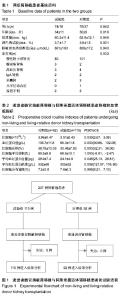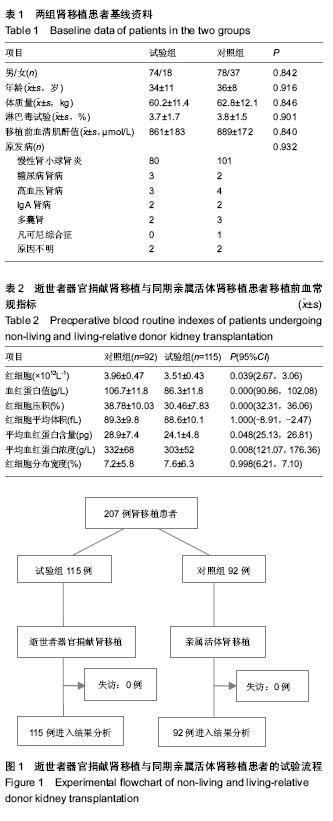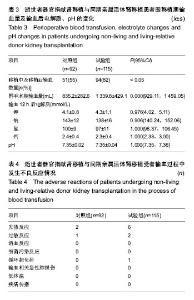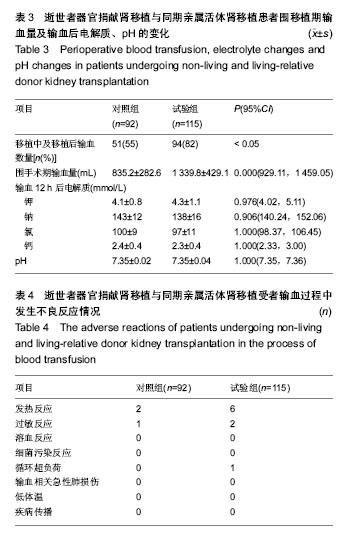| [1] Huang J, Mao Y, Wang Y, et al. Modernization of the organ transplantation program in China. Transplantation. 2008; 86(12):1649-1652.
[2] Huang J, Mao Y, Millis JM. Government policy and organ transplantation in China. Lancet. 2008;372(9654):1937-1938.
[3] Chen S. Organ transplantation. Zhonghua Yi Xue Za Zhi. 2002;82(24):1698-1699.
[4] Declaration of the 2nd Meeting of the Committee on Clinical Application of Human Organ Transplantation of China and National Summit of Clinical Application and Management of Human Organ Transplantation. Zhonghua Wai Ke Za Zhi. 2007;45(5):297.
[5] Chu SH, Hsu RB. Developments in transplantation in Taiwan. Transplant Proc. 1999;31(1-2):210-213.
[6] Riska O. Regulation of organ transplantation in China. Tidsskr Nor Laegeforen. 2008;128(22):2624.
[7] Daar AS. The World Health Organization resolution on human organ transplantation: will it result in action? Transplantation. 2005;79(6):641-642.
[8] Sylvan S, Christenson B, Hellström U, et al. Modernization in China results in changed problems concerning disease protection. Lakartidningen. 2001;98(35):3704-3706.
[9] Workshop on the issues of legislation of organ transplantation in China. Zhonghua Yi Xue Za Zhi. 1999;79(11):808-809.
[10] 黄洁夫.推动我国器官移植事业健康发展的关键性举措-心死亡器官捐献试点工作原则性思考[J].中华器官移植杂志, 2011, 32(1): 1-4.
[11] Huang JF, Wang HB, Zheng SS, et al. Advances in China's Organ Transplantation Achieved with the Guidance of Law. Chin Med J (Engl). 2015;128(2):143-146.
[12] Huang JF, Zheng SS, Liu YF, et al. China organ donation and transplantation update: the Hangzhou Resolution. Hepatobiliary Pancreat Dis Int. 2014;13(2):122-124.
[13] Huang JF. Constructing a national system for organ donation and transplantation. Zhonghua Wai Ke Za Zhi. 2013;51(1): 1-3.
[14] Huang JF. Some issues of living donor liver transplantation in China. Zhonghua Yi Xue Za Zhi. 2009;89(22):1513-1516.
[15] Chen Q, Zhang Y, Ekroos A. Comparison of China's Environmental Impact Assessment (EIA) law with the European Union (EU) EIA Directive. Environ Monit Assess. 2007;132(1-3):53-65.
[16] 中华人民共和国卫生部.中国心脏死亡器官捐献分类标准. 2011-4-26.
[17] 杜纪红.重组人促红细胞生成素治疗尿毒症贫血的疗效[J].临床医学,2013,54(1):412-415.
[18] Ye BD, Zhang X, Shao KD, et al. Combined use of Chinese medicine with allogeneic hematopoietic stem cell transplantation for severe aplastic anemia patients. Chin J Integr Med. 2014;20(12):903-909.
[19] Malyszko J, Koc-Zorawska E, Levin-Iaina N, et al. Zonulin, iron status, and anemia in kidney transplant recipients: are they related? Transplant Proc. 2014;46(8):2644-2646.
[20] Batal I, Schlossman RL, Safa K, et al. Anemia, fatigue, and late-failing kidney transplant. Am J Kidney Dis. 2014;64(5): xvi-xix.
[21] Budde K, Rath T, Kliem V. Anemia control in kidney transplant recipients using once-monthly continuous erythropoietin receptor activator: a prospective, observational study. J Transplant. 2014;2014:179705.
[22] Palmer SC, Saglimbene V, Craig JC, et al. Darbepoetin for the anaemia of chronic kidney disease. Cochrane Database Syst Rev. 2014;3:CD009297.
[23] Iwamoto H, Nakamura Y, Konno O, et al. Correlation between post kidney transplant anemia and kidney graft function. Transplant Proc. 2014;46(2):496-498.
[24] Salzberg DJ, Karadsheh FF, Haririan A, et al. Specific management of anemia and hypertension in renal transplant recipients: influence of renin-angiotensin system blockade. Am J Nephrol. 2014;39(1):1-7.
[25] 改善全球肾脏病预后组织.改善全球肾脏病预后组织慢性肾脏病贫血指南(概要)[J].中华内科杂志,2013,52(6):521-523.
[26] 王全立.中国的输血安全管理[J].中国输血杂志,2009,36(9): 368-372.
[27] 郑卫萍.肾移植术后早发贫血是移植肾丢失的独立危险因素:一项多中心队列观察研究[J].实用器官移植电子杂志,2013, 96(5): 717-725.
[28] 贾保祥,武俊杰,田野.肾移植患者术前输血与群体反应性抗体产生的关系[J].临床输血与检验,2008,10(1):26-28.
[29] Opelz G, Sengar DP, Mickey MR, et al. Effect of blood transfusions on subsequent kidney transplants. Transplant Proc. 1973;5(1):253-259.
[30] Caseley J, Moses VK, Lichter EA, et al. Isoimmunization of hemodialysis patients: leukocyte-poor versus whole blood transfusions. Transplant Proc. 1971;3(1):365-367.
[31] Bijnen AB, Vriesendorp HM, de Gruyl J, et al. Host responses to blood transfusions after transplantation of a DL-A-identical kidney. Transplant Proc. 1975;7(3):431-433.
[32] Opelz G, Terasaki PI. Histocompatibility matching utilizing responsiveness as a new dimension. Transplant Proc. 1972; 4(4):433-437.
[33] Higby DJ, Mishler JM, Cohen E, et al. Increased elevation of peripheral leukocyte counts by infusion of histocompatible granulocytes. Vox Sang. 1974;27(2):186-189.
[34] Sengar DP, Opelz G, Terasaki PI. Outcome of kidney transplants and suppression of mixed leukocyte culture by plasma. Transplant Proc. 1973;5(1):641-647.
[35] Morris PJ, Ting A, Stocker J. Leukocyte antigens in renal transplantation. 1. The paradox of blood transfusions in renal transplantation. Med J Aust. 1968;2(24):1088-1090.
[36] Braun WE, Magnusson M, Nakamoto S, et al. Intraoperative blood transfusions and hyperacute renal allograft rejection in a presensitized recipient. Transfusion. 1972;12(5):348-351.
[37] Ting A, Terasaki PI. Influence of lymphocyte-dependent antibodies on human kidney transplants. Transplantation. 1974;18(4):371-373.
[38] Storb R, Floersheim GL, Weiden PL, et al. Effect of prior blood transfusions on marrow grafts: abrogation of sensitization by procarbazine and antithymocyte serum. J Immunol. 1974;112(4):1508-1516.
[39] Oliver RT, Sachs JA, Festenstein H. A collaborative scheme for tissue typing and matching in renal transplantation. VI. Clinical relevance of HL-A matching in 349 cadaver renal transplants. Transplant Proc. 1973;5(1):245-251.
[40] Festenstein H, Oliver RT, Sachs JA. A collaborative scheme for tissue typing and matching in renal transplantation. 3. A preliminary assessment of the influence of histocompatibility matching grades on the outcome of renal transplantation. Transplant Proc. 1971;3(2):1011-1014.
[41] Fünfhausen G, Richter KV, Dutz W. Results in kidney transplantation in the DDR with reference to immunological cross matching. Haematologia (Budap). 1973;7(2):219-224. |



